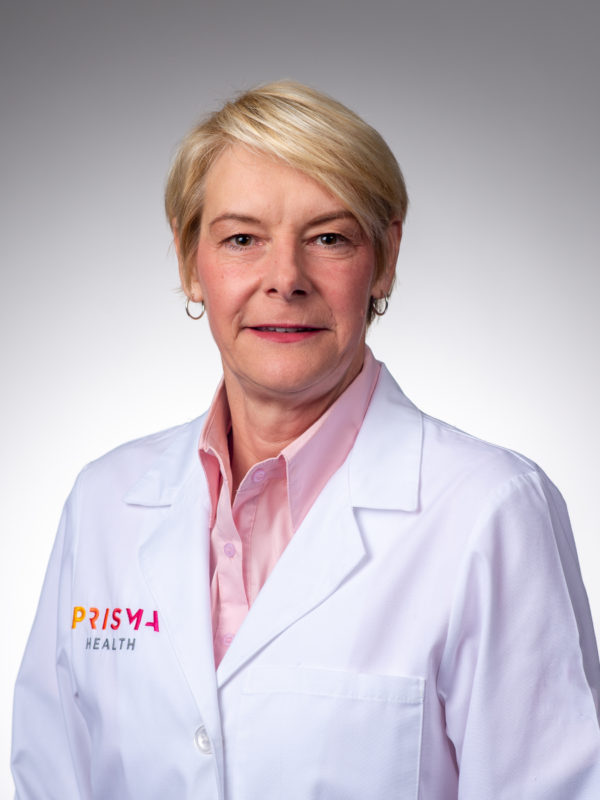How to know which health screenings you might need
Health screenings and tests are meant to help prevent or catch illnesses early when they’re easier to treat. But what do you need when, and are these kinds of tests really needed? Sandra Hardee, MD, explained what health screenings you might need and why.
“There are many of us who wish we could walk into our provider’s office and get checked for everything,” Dr. Hardee said, “But that doesn’t make a lot of sense. First, there’s no way to do that, but it can also result in unnecessary and costly testing.”
Many of the health screenings we undergo are based on evidence-based recommendations from the U.S. Preventive Services Task Force, which weighs the benefits of the preventive service against the harms.
What cancer screenings are needed?
“It’s important to remember screening is different from diagnosis,” Dr. Hardee said. “Screening means no symptoms are occurring. We’re trying to detect any problems early so they can be treated early.”
Here are the cancer screening guidelines recommended by the USPSTF:
Colorectal cancer. Screening for colorectal cancer is recommended for everyone between the ages of 45 and 75. Several tests are available for detecting colorectal cancer early before symptoms have started.
Breast cancer. A mammogram every two years is recommended for women between the ages of 40 and 74 years old, or earlier and more often depending on risk. An update to this recommendation is currently under review.
“While men do get breast cancer, there are no standard recommendations for screening in men,” Dr. Hardee said.
Cervical cancer. The HPV vaccine, which targets several strains of the human papillomavirus, is the primary prevention method for cervical cancer. The HPV vaccine is recommended for girls and boys beginning at age 11.
A Pap smear is recommended for women aged 21–29. “We don’t recommend HPV screening at this point,” Dr. Hardee said. “HPV is very common, and we don’t want a positive test for a type of HPV that may not contribute to a high risk of cervical cancer or may resolve on its own to complicate the picture.”
Between age 30–65, a Pap test is recommended every three years, or you can do a Pap test and HPV testing every five years.
After age 66, if you’ve had three normal Pap tests or two normal HPV tests in a row, or if you’ve had a hysterectomy removing the cervix (not due to cancer), no more screening is needed.
Lung cancer screening. “This is a fairly recent recommendation from the USPSTF,” Dr. Hardee said. The USPSTF recommends annual lung cancer screenings for anyone between the ages of 50 and 80 who has a 20-pack year smoking history, is currently smoking or who quit in the last 15 years.
“Of course, the most important way to prevent lung cancer is to not smoke,” Dr. Hardee said. “If you have a family history of lung cancer and you’re a nonsmoker, talk to your provider about screening. You also may fall into the category of someone who needs to be screened, even though you don’t have a smoking history.”
Prostate cancer. The USPSTF recommends that men aged 55–69 discuss with their provider whether to get screened for prostate cancer. However, African American men and those with a family history should consider screening around age 40.
Skin cancer. “The USPSTF doesn’t necessarily recommend a skin survey every year, but your primary care provider will talk to you about how to prevent skin cancer during your yearly well visit,” Dr. Hardee said. “If you have a concern about a mole, it’s not a bad idea to have them take a look.”
What other disease-specific health screenings are recommended?
In addition to cancer screenings, here are some additional disease-specific tests and health screenings that are regularly performed:
Hypertension. The USPSTF recommends that everyone over the age of 18 be screened for hypertension. No interval is published because this measurement is done so frequently, but at least yearly is best.
“We also recommend that if there’s a suspicion of hypertension, to monitor your blood pressure outside of the office,” Dr. Hardee said. “This is because of ‘white coat hypertension’ where someone’s blood pressure automatically increases when they walk into the doctor’s office.”
Diabetes. The USPSTF recommends screening for prediabetes or Type 2 diabetes in adults between ages 35 and 70 who are overweight or obese. They also recommend screening women with a history of gestational diabetes during pregnancy every five years.
“The American Diabetes Association supports screening everyone over the age of 30 for diabetes, and providers generally tend to screen for diabetes in anyone who has risk factors for heart disease,” Dr. Hardee said.
The test involves a blood draw that checks your hemoglobin A1C, which is an average of what your sugar levels have been over the last three months. This is a non-fasting test.
If you have diabetes or prediabetes, you’ll receive regular maintenance tests including:
- A hemoglobin A1C – every three months to two years.
- Urine test or blood test for kidney function – every year.
- Diabetic eye exam to evaluate the health of your retina (the back of the eye) – every year.
- Foot exam to check for nerve issues – every year.
High cholesterol or hyperlipidemia. The USPSTF recommends screening women aged 20–45 and men aged 20–35 for lipid disorders if they’re at increased risk for coronary artery disease.
Risk factors include if you have diabetes, hypertension, high stress, a family history of heart disease, or if you are overweight, a smoker and sedentary.
Abdominal aortic aneurysm. The aorta is a vessel that runs through your body, bringing a massive amount of blood to your heart, and an aneurysm is an outpouching of that blood vessel.
“Think of it sort of like a balloon that doesn’t have a lot of strength in it, so it gets floppy,” Dr. Hardee explained. “If this happens, it means the blood isn’t getting to the heart as efficiently as it should. It also means that blood can pool and cause clots that can shoot off to different parts of the body. In a worst-case scenario, it can actually tear or rip the blood vessel if it gets too floppy, which would be highly emergent.”
The USPSTF recommends a one-time ultrasound screening in men aged 65–75 who have ever smoked (meaning more than 10 cigarettes). If you don’t fall within these guidelines but you have a family history of this condition, talk to your provider and see if this test might be appropriate for you.
Osteoporosis (thinning of the bones). Although men can experience osteoporosis as well, the USPSTF recommends a bone density scan, often called a DEXA scan, in women aged 65 and older or in women who are younger than 65 years who may be at high risk for osteoporosis.
“A DEXA scan will show us whether the bones are thinning and give us a ratio of the severity of that thinning,” Dr. Hardee said. “Depending on the severity, you may be put on medication, or you may be encouraged to do weight-bearing exercise and then asked to come back in five years for a repeat scan.”
Depression and anxiety. The USPSTF recommends screening for depression in adolescents and adults using a screening questionnaire. It also recommends screening for anxiety in children starting at age eight.
“There isn’t a recommendation for an anxiety screening for adolescents and adults, but most providers do the two together,” Dr. Hardee said.
Hearing loss. Everyone over the age of 50 should have a formal hearing evaluation either with their primary care provider or an audiologist.
“Hearing loss is extremely prevalent in folks over the age of 50,” Dr. Hardee said. “It’s important to be screened so that you can have intervention if needed. Hearing loss is a huge quality of life issue.”
Immunizations. There are several vaccines that are recommended for adults, including a new RSV vaccine for those over age 65 that should be available this fall.
What other screening tests might you need?
Here are some other tests that aren’t necessarily in the USPSTF recommendations, but are commonly used to help prevent illness and keep you healthy:
- Health risk questions. These are questions about your health habits, such as your nutrition, physical activity and sleep, so that you can make lifestyle changes if needed.
- Coronary vascular disease. Depending on your risk, your doctor might suggest an ankle brachial index, where the blood pressure in your ankles is measured and compared to the blood pressure in your upper body. If you’re at higher risk, you might also be asked to undergo a calcium score test as well as other screening tests.
- Obesity/overweight. Body mass index (BMI), waist circumference and relative fat mass are helpful in determining what your future illness risk could be.
- Hepatitis and HIV. A sexual activity questionnaire might be recommended to see if you’re at risk for certain infectious diseases.
- Substance abuse. Your doctor may talk to you about tobacco, alcohol and other substance abuse to see if you’re engaged in addictive behaviors or substances.
- Intimate partner violence. You might be asked questions to make sure you feel safe in your own home.
- Social determinants of health. This includes questions about transportation, food, safety, finances, and health literacy (understanding health information), so physicians can adjust their recommendations to your needs.
The bottom line
Be sure to visit your primary care physician at least once a year to make sure you’re keeping up with the basic health screenings and tests needed to keep you healthy.
Find the care you need, close to home
Our primary care physicians provide well visits and everyday care when you need it with compassion and expertise.
Find Primary Care Near You

